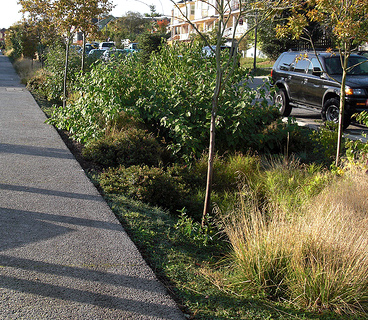Leader
Martinique Mims
Location
2749 Woodhill Rd, Cleveland, OH 44104 Cleveland, OH 44104
About the project
The influence and value of parking in planning for livable communities is often underestimated and not well understood. East End Neighborhood house serves over 2500 people in the community for a plethora of resources in which guest, residents, and visitors frequent our services. To help communities address their parking concerns with the end goal of making their communities more livable, East End Neighborhood House is seeking to welcome a healthy, safe and sustainable environment inside and out. But we are facing challenges for safe parking and active living. When we host community events, parking isn't always accessible and convenient, and during nightly functions our street lights are dim and unsafe. Along with the efforts to get our community family active and in our collaboration with the HEAL Initative (Healthy Eating Active Living) we are seeking to get our staff, children and seniors out and active in a safe environmentally friendly, paved and lit environment around our center.
Being the anchor in the community of Buckeye/Woodhill for over 100 years, we wish to step into the green space and lead a more sustainable objective! For our seniors (wisdom keepers) and the children that we serve; our facility wishes to give them access to healthy pathways/walkways and an accessible parking lot for safety. Creating an esthetically pleasing environment can change the way we and others view our community and that can enhance community life!
We've ascertained that the most important function of parking lot landscaping is to provide natural drainage, a water collection network, and storm water filtration. Landscaping can enhance the esthetic quality of the space and help reduce temperatures in the summer by providing shade. Pathways for sustainability are a must. It’s necessary to be mindful of the way that municipalities plan for and provide pathways and parking because it has a huge impact on the future livability of our communities.
The Steps
Step 1: Map the Area to visualize what already exists, and to find the optimal locations for additions and enhancements (ex:areas of sun and shade, wind direction, slope of the terrain, moisture levels of soil, plants already growing in the area and soil type.
Step 2: Test the Soil. Using plants that can grow under the existing soil conditions can help save money because they will have fewer maintenance needs than those that require soil amendments such as organic fertilizers and supplemental irrigation.
Step 3: Plant Selection
Step 4: Landscape the Area: Hire an outside contractor for landscaping work, we'll look into a landscape company that uses ecologically sound practices and understands proper tree care.
Step 5: Plan for Climate Change with Permeable Pavers: Understand how the environment works in order to adapt and refine our project for the future. We can take a proactive step towards protecting our sustainable landscapes through climate change adaptation and installation of permeable pavers!
Why we‘re doing it
2018 kicks off our 111th year of service to over 2500 people in the Buckeye Woodhill area this year. We've discovered that near our center and in our community not much is being done to promote green space healthy living and livable communities. Our parking lot and general outside facilities aren't as accessible to our frequent guest, residents and friends. We service seniors and children that must cross our parking lot to our center every day, and currently it is not safe or environmentally friendly. Along with promoting a more active community with greener space we are seeking to create pathways for walking and play for our seniors and children. East End realizes that pavement often covers much of the landscape, especially parking lots. That means when it rains, water runs off the pavement, bringing contaminants along with it. Permeable paving technology merges science and design to allow surface water to infiltrate back into the ground.
When water infiltrates back into the ground, it’s diverted from the stormwater management system. These improvements are good for the environment, for the pocket book and improves water quality. Because these systems deal with the first flush from rain events, they capture oil, gas, and fine particulates. Research has proven that microorganisms within the base layer digest the hydrocarbons, effectively treating the typical volumes entering the system from parking lots. This makes permeable systems a valuable part of the stormwater treatment train.
Parking is more than a necessary element of larger residential or commercial uses; it merits consideration as a distinct land use that affects travel behavior and the environment. Even the perception of available parking can influence mood choice and economic competitiveness of an area. Communities planning for parking and pathways for residents are wise to consider its impacts on nearby uses and behavior. Where possible, encouraging sustainable parking and healthy active livable communities creates shared opportunities. We are seeking to connect the community to the environment and allow all of us to THRIVE!
Serving YOU, Serving US ~ UBUNTU!

